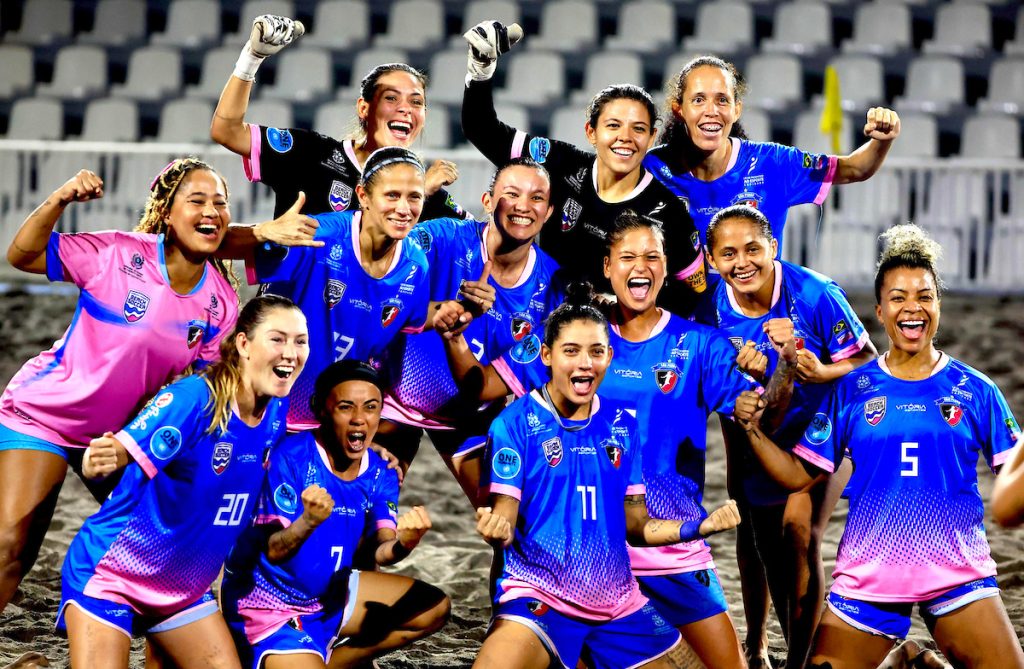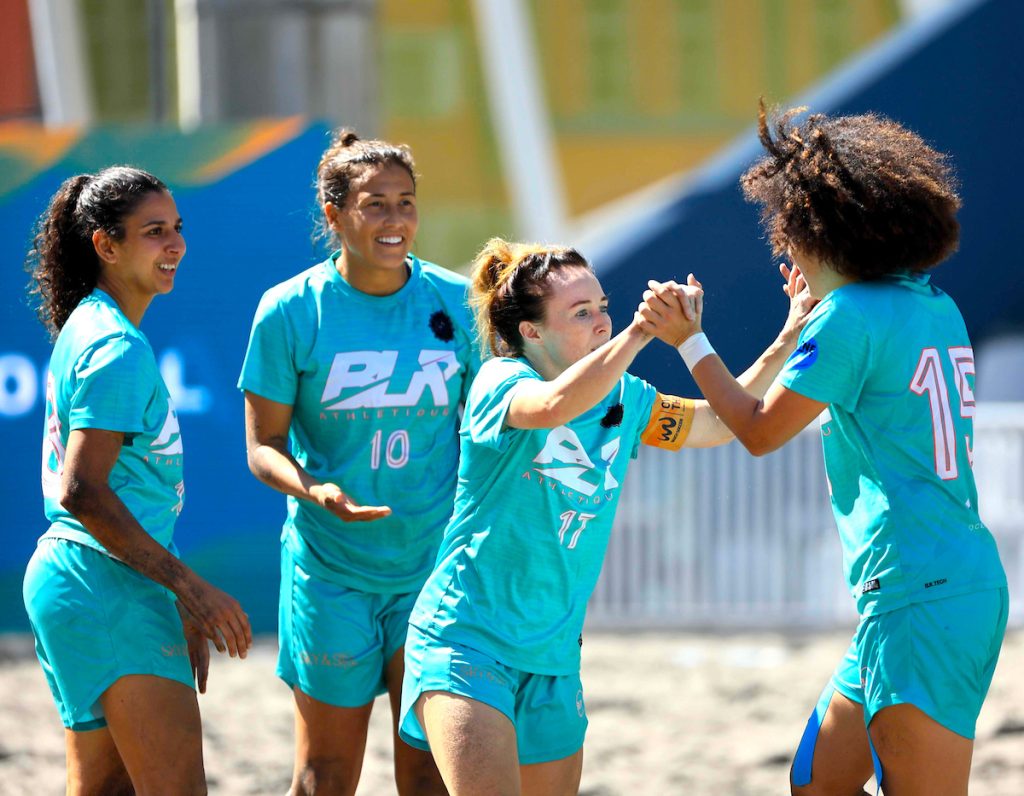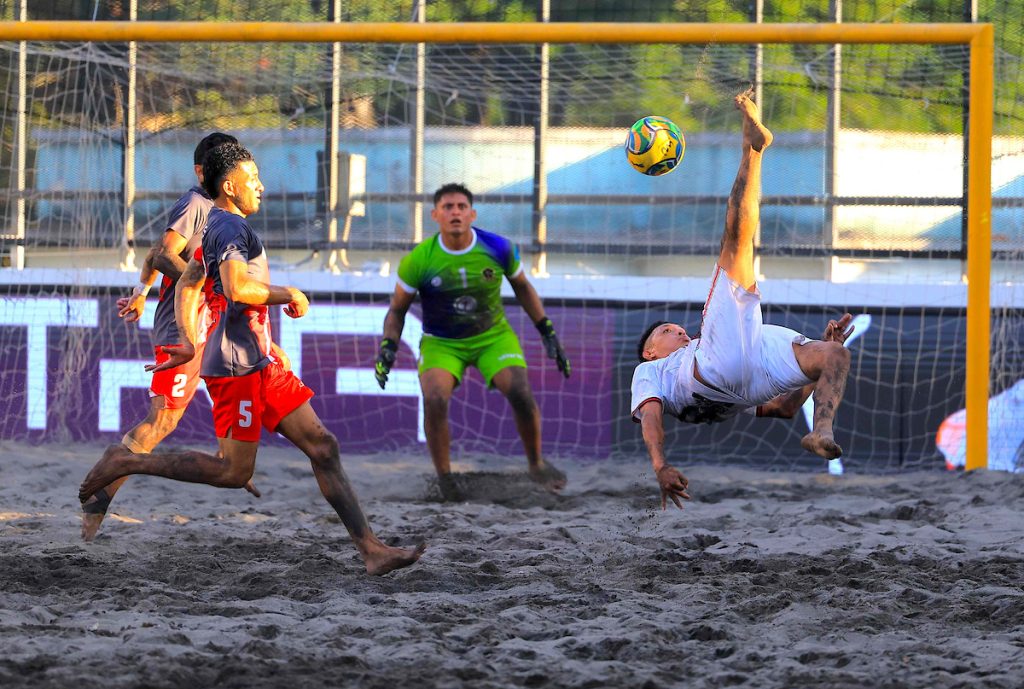Commentator Mark Pendergast shares his insights on the contrasting and connecting features of these sporting cousins
Beach soccer is football in reverse, let me explain, it’s where the simple is extraordinarily difficult, and the extraordinary looks simple. Case in point; an overhead kick is routine, but a 10-metre pass along the ground is nigh on impossible.
The more beach soccer develops, the more this is true. You don’t need to take my word for it we have the stats to back it up. The FIFA report on the 2019 World Cup in Paraguay makes for intriguing reading and proves what works in football, well you can do the complete opposite in beach soccer and expect success.
Tika taka, invented by Barcelona (so they keep telling us), if done well, it works like a dream, lure your opponents in, tire them out, find the gap and then attack. When executed well not only is it glorious to watch, but your opponents feel like they have run a marathon by half time, leaving them close to collapse. The result is goals galore, an adoring fan base and more silverware than one of Queen Elizebeth’s state banquets.
Sand is the enemy of tika taka. Did you ever see Barcelona training on the beach? If you start passing the ball on the sand then suddenly playing pinball by the sea! The ball develops a mind of its own as it pings side to side, leaving the recipient preparing to use a random body surface anywhere between little toe and forehead to control the ball.
So let’s do the beach soccer flip, less passes mean more goals. Brazil managed fifteen goals with zero passes! “How?!”, I hear you cry; well goal-scoring keepers and free kicks are largely responsible. Portugal, the champions, were the most tiki-taka of all teams, scoring the majority of their goals from just two passes! It’s not exactly in Barca territory and proves when it comes to passing the ball, less is more.
The overhead kick on a grass pitch is like being upgraded on an airline, rare, special and happens when you least expect it. However, it’s routine on the sand. The World Cup saw around 450 overhead kicks in 32 games, a huge 14 per match or one every two and a half minutes! It doesn’t always mean a goal, but when Italy play it usually does, they popped up with eight goals in the tournament, four times as many as their nearest rivals.
In the 11-a-side game, there is an old adage that you never change a winning team. In beach soccer, it’s different, you immediately change a winning team! When a goal is scored more often than not, the scorer will immediately depart the sand usually followed by his teammates. The stats from the FIFA World Cup state the most successful teams change the entire outfield team deliberately and often.
The reasons are simple, tactics are straightforward, so interchanges are easy to execute, it allows the intensity to be maintained, and the team on the sand always remains fresh. The wholesale changes would be frowned upon elsewhere, but in Beach Soccer the ability to change in the blink of an eye is a massive advantage.
The sand variation of football shares it’s DNA with the beautiful game, but in other ways it’s totally different, and with its unique quirks, somehow it has become more beautiful.
Article: Mark Pendergast (Beach Soccer Commentator)
Photo: FIFA
















































